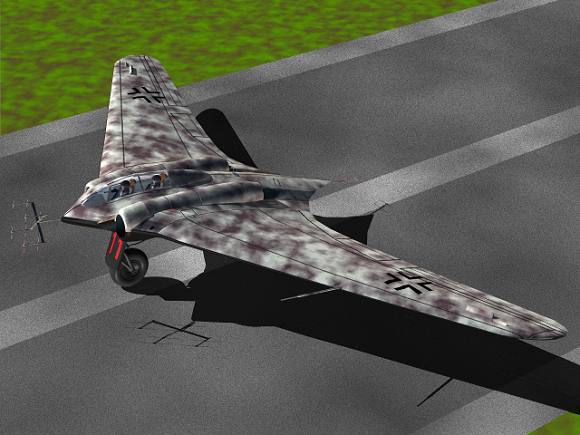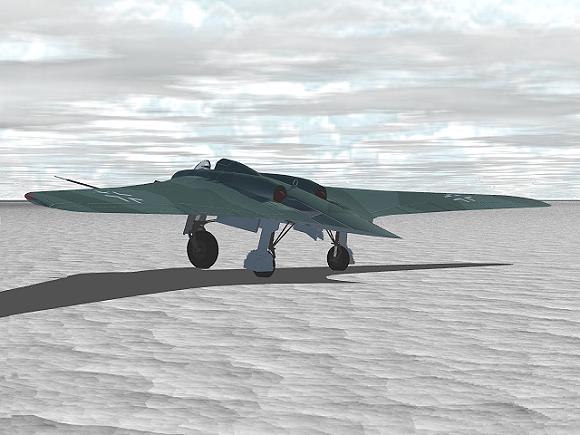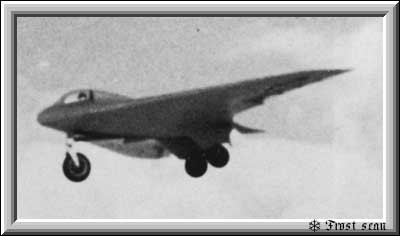One of the weirdest, the Natter (snake)
http://www.youtube.com/watch?v=_M86jzaVljs&mode=related&search=

One of the weirdest, the Natter (snake)
http://www.youtube.com/watch?v=_M86jzaVljs&mode=related&search=
The Luftwaffe fought the entire WWII with basically the same aircraft it went to war. Of course the Fw-190 was the major introduction of a new type of fighter, and there were others which only had a minor impact on the air war.
Much has been made of the intrigues played out in the selection process of equipment granted production status and it is quite possible if certain types were introduced instead of those chosen the impact might have been significant.
So what if the He-100D was given priority over the Bf-109? Or if Milch had cast aside his prejudices and granted the highest priority to the He-219. Was the failed Ta-154 the right choice? If Heinkel was granted production status of the He-280 in late 1942, would this aircraft had maintained the quality lead the Luftwaffe enjoyed?
Was Goerings favouritism responsible for the non event of one of the most spectacular twin engine fighters ever designed, the Fw-187. Similarly the financial support given to the Messerschmitt company to develop the flawed Me-209/Me-309 could have been put to better use, ie the Dornier Do-335 and Fw-190D series.
Would any of these aircraft which had tremendous credentials to have entered service, had an impact on the war, or been a more viable alternative than the aircraft chosen ahead of them?
Regards to all,
Digger.
The Me-209/309 wasnt really good, Galland want to delete the development of those 2 and concentrate in the Fw-190A,D y Me-262 quite visionary.
Check this…
Adolph Galland’s report regarding the Me 262
[RIGHT]Berlin, 25 May 1943[/RIGHT]
Most esteemed Herr Generalfeldmarschall!
On Saturday, the 22nd of the month, I tested the ME 262 at Augsburg in the presence of Oberst Petersen and other persons from the Technical Office. I would have preferred to report personally to the Generalfeldmarschall and also elaborate on other matters, however I was so occupied after my visit to Sicily that there was simply no time. The Reichmarschall has ordered me to report today.Concerning the Me 262, I beg to state the following:
1.) The aircraft represents an enormous leap forward, it would give us an unimaginable lead over the enemy if he adheres to the piston engine.
2.) In-flight handling of the airframe is impressive.
3.) The power plants are fully convincing, except during take-off and landing.
4.) The aircraft offers entirely new tactical prospects.
I beg to submit the following proposal: The Fw 190 D is under development, its performance should match the Me 209’s in all respects. The performance of the two types, however, will not be superior to the enemy’s models, particularly at altitude. The only progress seems to be in armament and higher speeds.
Conclusion: a) Me 209 be discontinued
b) Total fighter production to switch from the Fw 190 with BMW 801
to the Fw 190 with DB 603 and Jumo 213 respectively.
c) The construction and industrial capacities thus released to be
concentrated on the Me 262, with immediate effect.
I shall report immediately on my return.
Heil Hitler! Herr Generalfeldmarschall your most obedient servant.
Galland
More of this subject you can found in…
Galland’s comments were largely ignored and funding was still being thrown into this useless programme in early 1944.
The only words that could describe the Me-209 is-it was a dog. Argubly the Me-309 was worse. These developments were a tremendous waste of resources and further convinced Erhard Milch, Professor Willy Messerschmitt was anything but a genius.
Regards to all,
Digger.
Milch was possibly justified in his opinions of Messerschmitt, beginning with the professor’s failure to rectify technical problems with the Bf-109. In addition Messerschmitt’s interference in the Me-210 project cost the German war effort dearly, nearly 1,000 modern twin engine fighters when they were most needed.
The continuing failures to develop the Me-209 as a fighter only served to sour his opinion of Messerschmitt further and lead to intrigues which may have led to Milch’s own downfall in 1944.
Regards Digger.
failure to rectify technical problems with the Bf-109
What tecnical problems ?
The Messerschmitt suffered from a weak undercarriage throughout it’s entire career, resulting in numerous incidents of ground loops. For the inexperienced or unwary pilot the 109 was a deadly aircraft.
This was why the He-100 with it’s wider and more stable undercarriage had it’s fair share of proponents.
Regards Digger.
It probably was more a characteristic of this desing but not really a technical problem, just think that the Spitfire had an even narrow undercarriage.
I recomend you this article:
http://www.virtualpilots.fi/feature/articles/109myths/

Brilliant site Panzeknacker.
Tons of information.
Thanks for the link. It basically confirms many things about the 109, the most critical of which were the undercarriage and the cramped conditions of the cockpit. These were very real problems, but as it is often repeated pilot experience and training would eliminate these negatives.
Having said that as the war dragged on, short cuts were forced on the training establishment and of course the drain of more experienced pilots in the combat units played havoc with ongoing training once green pilots reached combat units.
Of course if the situation were reversed we would be looking at deficiencies in Allied aircraft. Perhaps the less known fact is late model 109’s in the hands of competent pilots could match it with most Allied fighters. This has been often repeated, but largely ignored. The 109 right to the end was still capable of being a very potent fighter plane.
Regards Digger.
I think that the most serius disavantage of the Messer was the light armament of the F and early G series, that required some ad ons wich affected performance.
These were very real problems, but as it is often repeated pilot experience and training would eliminate these negatives
True in most cases.
And of course the add on armament mad the 109’s very unweildy, especially at low speeds. A disastourous mix for many of the inexperienced pilots flying in the latter part of the war.
Regards Digger.
How about the Ho IX
How about it, well I think that both were aerodinamical marvels of Reimar Horten.
The Ho-IX would be a excellent fighter bomber.


I believe their were alot of aces who drove this plane.
only 1 was flyable and about 6-8 were under construction when the factory was captured
I believe their were alot of aces who drove this plane.
You must be confused with some else because as Gunship said no operational use of the Ho-IX were achieved.
Glider proto in flight.

2 more images of the He-100 , I think that this aircraft was the best and one of the early capable of replace the 109. This plane was the quick response of Heinkel factory after the He-112 was badly beaten by the new design of Bayerische Flugzeuwerke.
Originaly equiped with an internal radiator, wich use as evaporation surfaces the wings and fuselage of the aircraft itself. This save weigth and improve performance, mostly because the lack of external opening and low drag.
This system working well in the dedicated record aircraft He-100 V-8, but was insuitable for a truly combat aircraft. the V8 used a DB-601R engine wich was feeded by a special mixture of 90 % 100 octane fuel and 10% methanol, this allowed 1775 hp for short periods.
It take over the world speed record at 746 km/h.

Eventually the evaporation sistem wich his intrincated pipes and electrical water pumps ( 22 to be precise) was to be abandoned because his hard maintenance and the always present risk for a combat aircraft of a failure, wich can be caused even by a single 7,7 mm bullet piercing wich would make entire sistem broke and make quick engine overheat wich bring down the plane sooner or later.
Anyway this sistem was put in the 3 D-0 series, then these Heinkels was send to japan.
